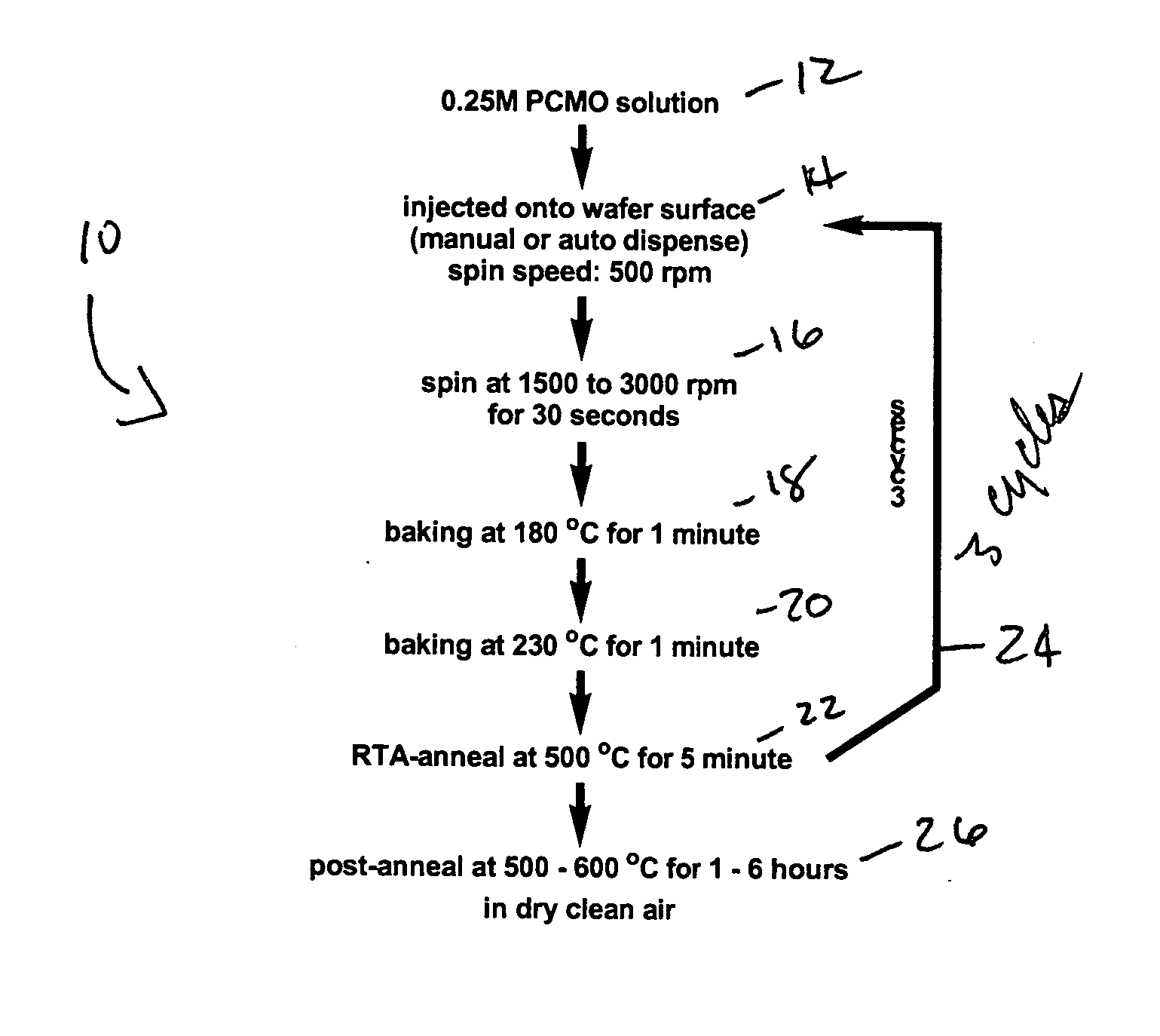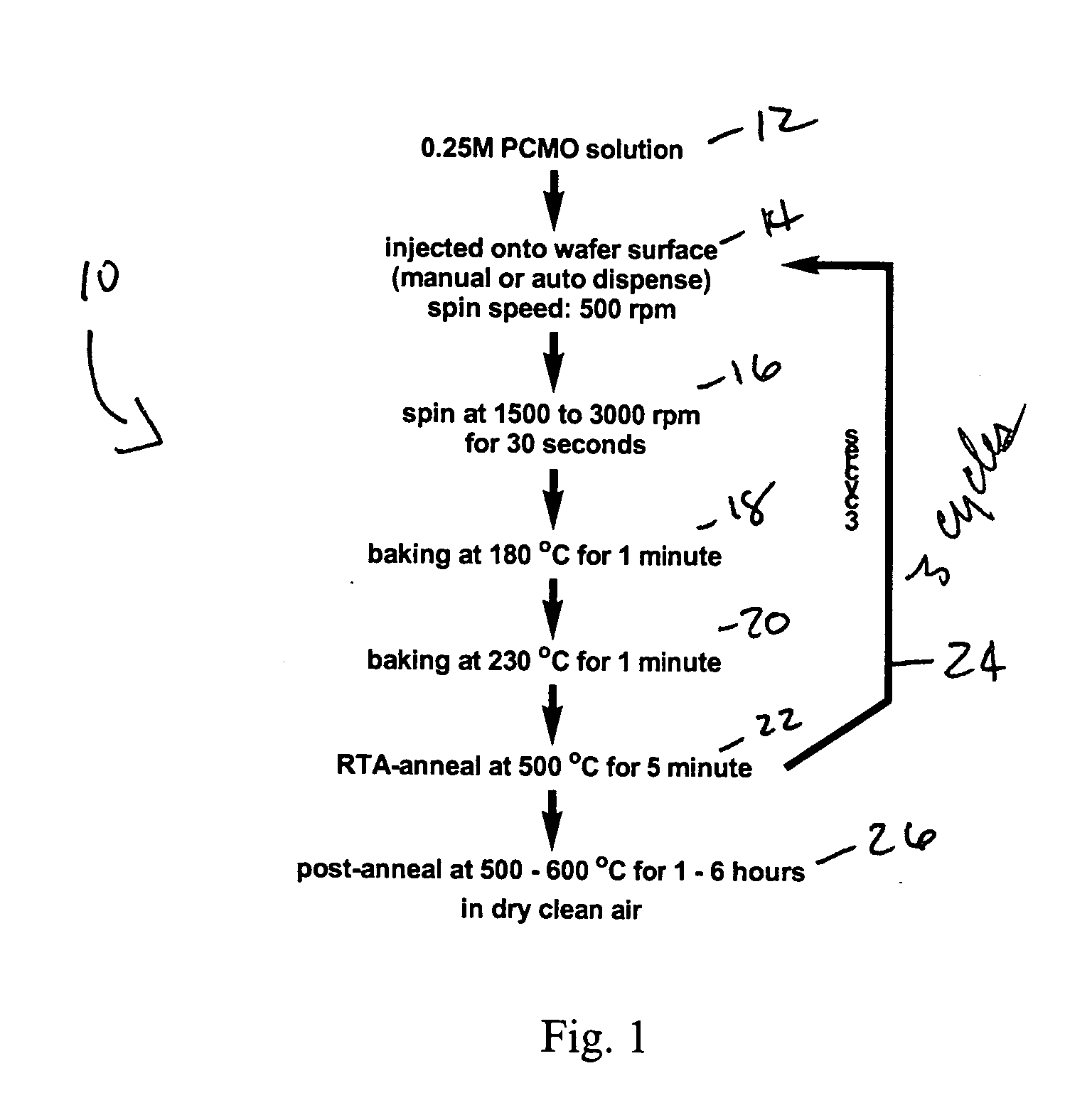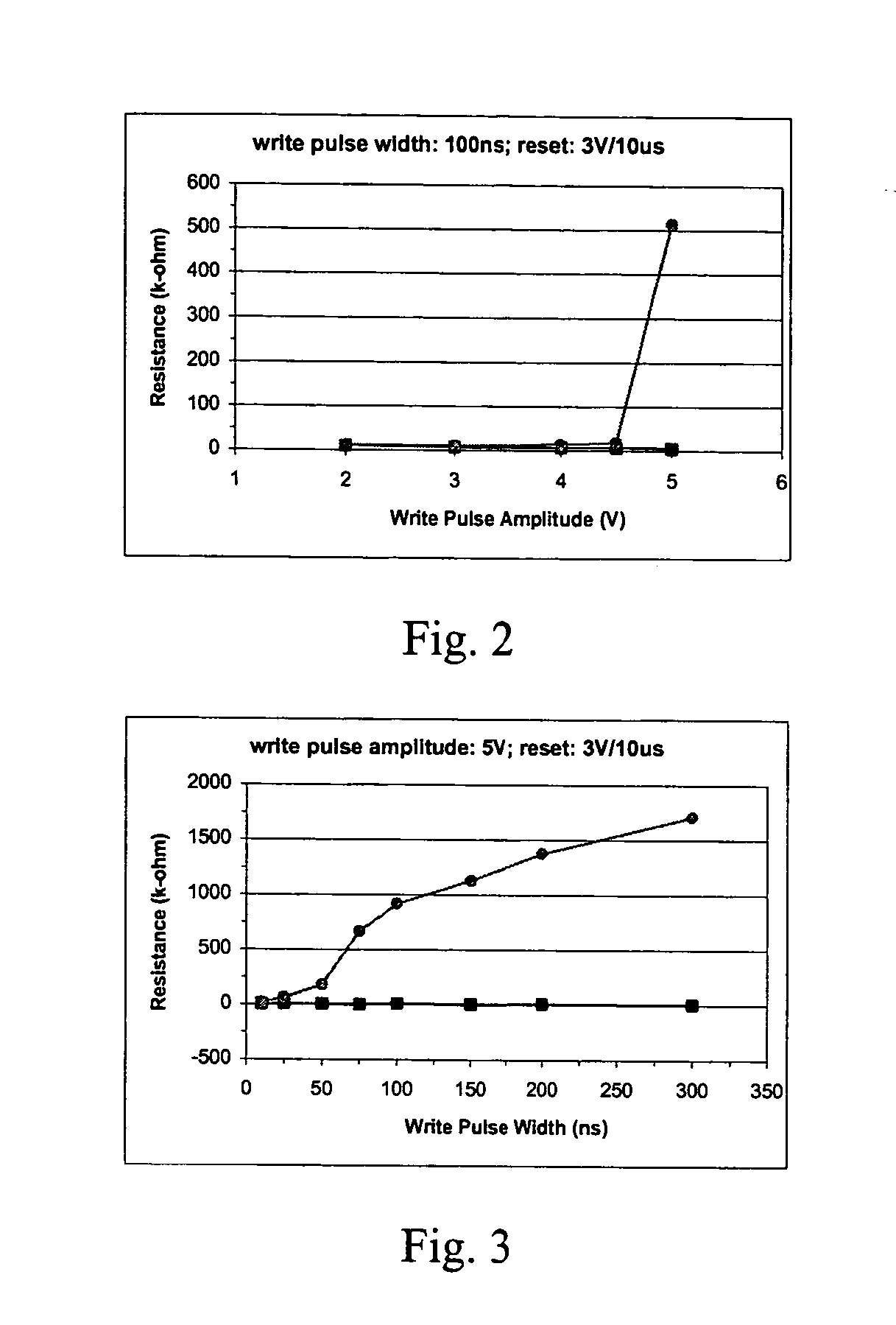Method of substrate surface treatment for RRAM thin film deposition
a technology of rram and substrate, applied in the direction of liquid/solution decomposition chemical coating, crystal growth process, polycrystalline material growth, etc., can solve the problems of circuit yield, inability to cover the full circuit area with a single grain of pcmo, and complex device incorporation into state-of-the-art integrated circuit fabrication
- Summary
- Abstract
- Description
- Claims
- Application Information
AI Technical Summary
Problems solved by technology
Method used
Image
Examples
Embodiment Construction
[0014] Transition metals, after a special surface treatment of the method of the invention, may be used as electrodes for the integration of RRAM thin film. Colossal magnetoresistive (CMR) material, such as Pr0.3Ca0.7MnO3 (PCMO), exhibit resistive switching properties upon application of an electrical pulse. The first example of the method of the invention includes fabrication of a PCMO thin film deposited on a substrate of rhodium, surface-treated with an alloy of Pt0.2Co0.8. The film demonstrates reversible resistant changes with the application of narrow electric pulses.
[0015] PCMO thin films have been found to have reversible resistance change properties. The resistance may be increased to a high resistance state by applying an electric pulse of nanosecond duration, such as 5V electrical amplitude and 100 ns pulse duration time. To reset the resistance to a low resistant state, a microsecond electric pulse, e.g., a 3V amplitude and 10 μs pulse width, may be applied. This unique...
PUM
| Property | Measurement | Unit |
|---|---|---|
| temperature | aaaaa | aaaaa |
| temperature | aaaaa | aaaaa |
| temperature | aaaaa | aaaaa |
Abstract
Description
Claims
Application Information
 Login to view more
Login to view more - R&D Engineer
- R&D Manager
- IP Professional
- Industry Leading Data Capabilities
- Powerful AI technology
- Patent DNA Extraction
Browse by: Latest US Patents, China's latest patents, Technical Efficacy Thesaurus, Application Domain, Technology Topic.
© 2024 PatSnap. All rights reserved.Legal|Privacy policy|Modern Slavery Act Transparency Statement|Sitemap



